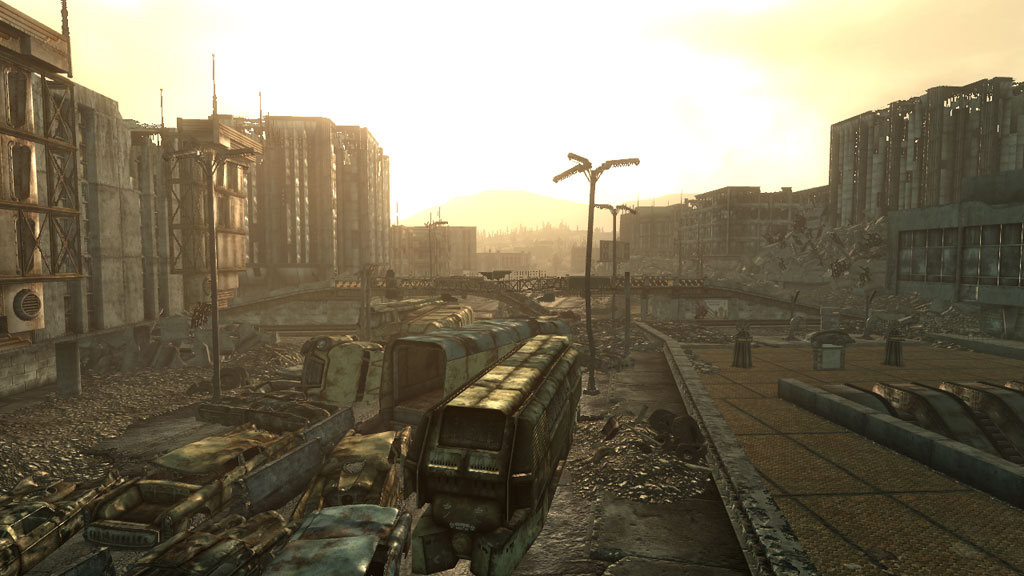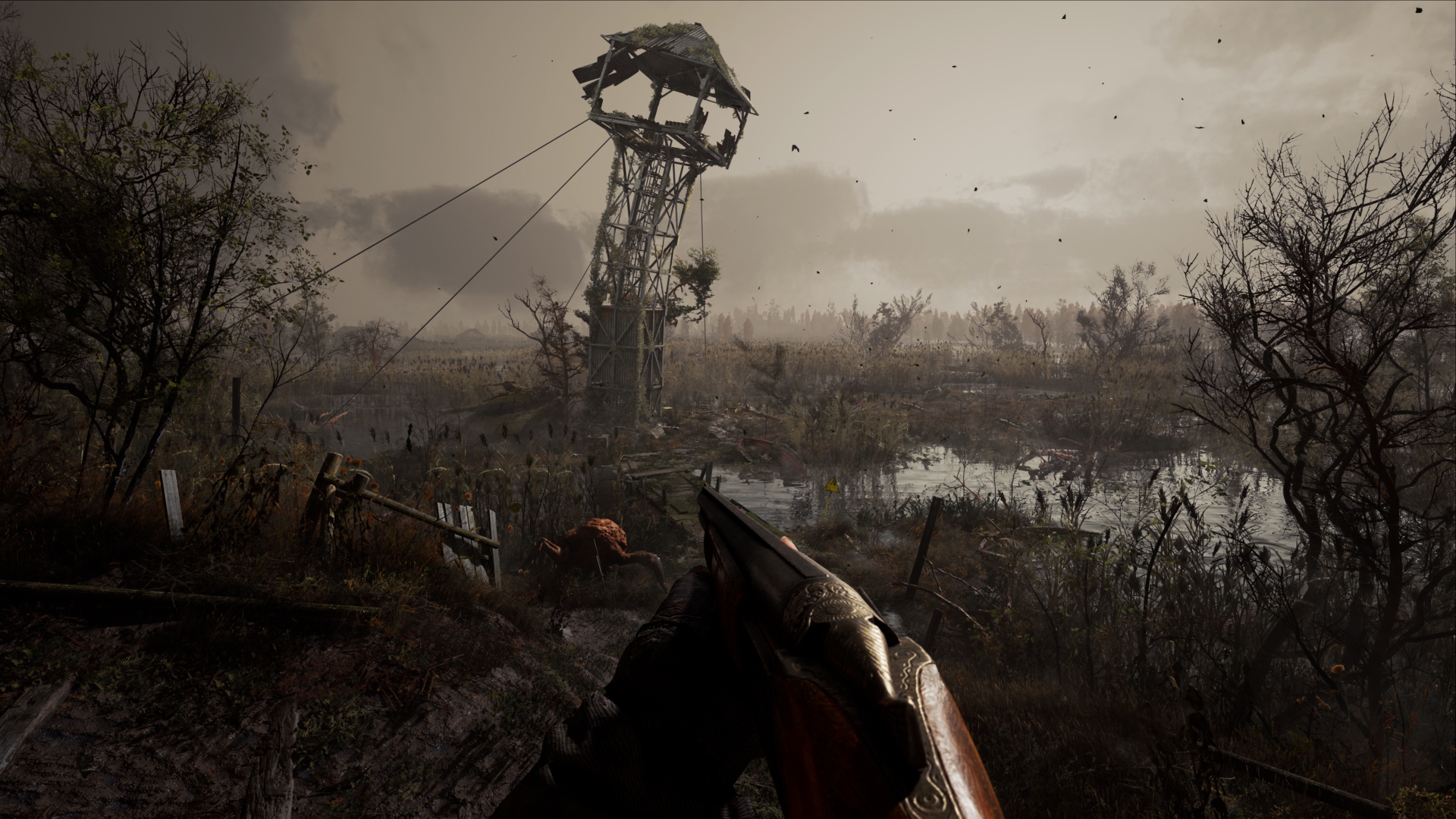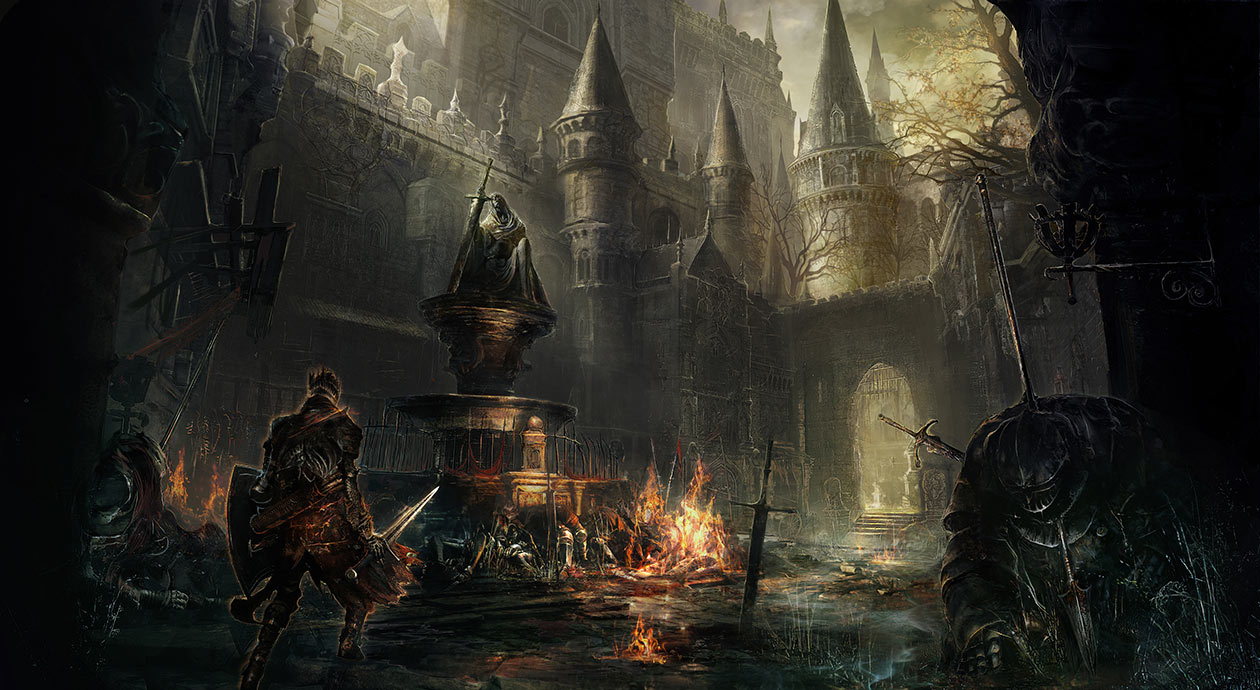Why I'm comforted by doomed worlds
Hello, friends. Today I’m going to try something slightly different - even more rambly than usual, even more of a stream of consciousness. I’ve been trying to put an article together for a couple of days now (granted, in whatever short bursts I have when I’m not on childcare duty) - but I gave up half a page in, for three drafts in a row.
New strategy: get away for an hour, pop into a coffee shop (which serves beer, that’ll be relevant in a minute), and pop out a completely unedited piece I’m excited about. So, a music station with a mix of the Witcher, Divinity, and Elder Scrolls tunes, a morning beer in hand (payoff - I told you it’ll be relevant), and a laptop to aggressively type about how passionate I am about video games.
And you know what I’ve been wanting to write about? Rot, decay, and death. Yeah, how edgy of me right? But when it comes to games, there’s something magical about decaying, abandoned, and long forgotten worlds, and I love the way decaying worlds make me feel, but I’ve never been able to articulate this particularly well, or even turn that into a half-decent article outline.
My relationship with decaying worlds in gaming probably started with Fallout. Yeah, nuclear wasteland - Fallout is not about rebuilding, a new hope, and a bright future. If it was - the denizens of the wastelands wouldn’t be building their houses out of literal garbage. I mean come on - even raiders put more effort into decor - you just know some interior decorator turned raider spent all this time cleaning up human skulls, rib cages, and various giblets, making hooks and cages, and aesthetically spreading those out through whatever hunk of land raiders call home. Not my style, but A for effort.
 I love the abandoned landscapes of Fallout 3. You can often see the exact moment the life stopped and the apocalypse begun.
I love the abandoned landscapes of Fallout 3. You can often see the exact moment the life stopped and the apocalypse begun.
No, no - Fallout is the world that’s fallen apart, a world that’s broken, and a world that will not come back together. The nuclear wasteland, with its warmongering up factions, abandoned buildings, and remarkably well preserved pre-war curiosities.
I spent some time with Fallout 1 and 2 as a kid, never getting to the end, nor really wrapping my head well around the theme. The first two games did a great job with dark satire, and silly situations, and the world born out of a passion of a bunch of geeks with the money to build a video game about their dork hobbies. But it was Fallout 3 that really captured me as a teenager - in part due to the accessibility that came with a jump to a three dimensional space, Bethesda’s focus on accessibility, and probably just the perfect age I was to obsessively play a video game.
Bethesda are the kings of environmental storytelling. Creating the frozen in time scenes - sometimes sad, sometimes funny - two skeletons embracing each other in death, a dead man in a tub with a toaster, half-eaten pre-war meals (what did they put in the food that was preserved better than the people?). Exploring a world that’s fallen apart was strangely comforting. Like all the expectations are off, and there was just strange familiarity and comfort in the fact that the ruins of civilization I scavenged will forever be preserved as a broken reminder of the scenes of times past.
Spoiler alert for a rather old game, but in Fallout 3 there was this settlement around a sentient tree - Harold the Tree (a recurring character from an earlier Fallout game), and Harold the Tree could bring life back into the wasteland. Green trees, clean water - a true oasis among the harsh wasteland. Moral implications of Harold’s suffering aside (a tree grew through him, and he’s quite miserable and just wants the nightmare to end), I remember having a visceral reaction to losing the wasteland - the place I’ve grown attached and accustomed to. There’s something inviting and familiar to the harsh environment, the decrepit buildings, and overgrown vaults.
 S.T.A.L.K.E.R. 2: There’s something appealing to the desolate landscapes of the exclusion zone.
S.T.A.L.K.E.R. 2: There’s something appealing to the desolate landscapes of the exclusion zone.
I can’t write about video games without bringing up Dark Souls, and both the Dark Souls trilogy and its follow-up - Elden Ring - happen in a world that’s long past its prime. The air is thick with apathy, the cycle is near its end, and no bright future awaits its inhabitants. There is no hope, there is no tomorrow.
Dark Souls explores the idea of cycles common in Eastern culture and mythology: the cycle can be continued - and the inhabitants will die, and they will probably be reborn into something else, only to die again in the future. Or you can break the cycle, snuffing the light of the flame and dooming the already slowly dying world.
Environments of both the Dark Souls and Elden Ring games further support the image of a decaying world. Dilapidated ruins of churches, remnants of long forgotten civilizations. The foes don’t fight you with a burning hatred of anger or passion - there’s the indifference you can feel from Ornstein and Smough, Great Grey Wolf Sif emanates the sadness of loss, and defeating Sif’s master is no better - there’s no triumph to laying Artorias the Abyss Walker to rest.
There’s comfort to seeing civilizations of the long past in ruins. I’m afraid of death, afraid of fading and being forgotten, afraid of loss. And I get to confront these feelings safely, comfortably, in a medium I like.
There’s the impermanence to real life that people often struggle with. We won’t live forever. People we love won’t always be in our life. Some day the place we call home will crumble to dust. It’s natural to long for stability, to exert control over ever-rising entropy, but it’s not always possible.
 Dark Souls 3: a kingdom long past its prime.
Dark Souls 3: a kingdom long past its prime.
This is the point in the article where I kicked off a few online searches. I found “Ruinensehnsucht” a German word-phrase coined by Mathias Fuchs. It stands for “melancholic longing for decay” - leave it to the Germans to have words for everything.
I’ve just read through “Ruinensehnsucht: Looking for Decay in Computer Games” - the author of the paper explores various ideas as to why we love decay in games. In a true academic fashion, Mathias Fuchs puts out a number of theories - a reminder of the power of nature, a monument to human skill, strive for eternity, an increase in gaming graphical fidelity and a drive for more realistic visuals, controversial Freudian idea of “Todestrieb” (alleged human’s innate drive towards death and inorganic state), and shared context from prior media.
The answer probably lies in a combination of things.
There’s definitely much stability in the idea of ruins that will never change. And yeah, it’s a game - and the game worlds are often static. I can boot up Fallout 3 now - and I know the ruins are still there, still untouched, pixel-to-pixel the way I remember. It’s comforting.
The decaying, soon to be destroyed world of Dark Souls helps to process acceptance of our own inevitable demise, and all the death we’ll have to endure throughout our lifetime.
Thinking back to my opening statement, I don’t strive for decay. I strive for my own acceptance of the inevitability of death, impermanence of life, relationships, and our creations. Unlike in my own life, there’s no expectation of tomorrow when I boot up a game. I don’t have to plan for the future, and deal with the minutia of the impact of loss on my own life. My own life isn’t threatened by the decaying world, and because of it I find comfort in being able to process all these feelings and emotions in a safe space.
Thanks for reading through something different. Take a moment to let me know what you think of the change in style, and naturally share more about your own experience with death, rot, and decay in digital worlds.
Comments
Respond directly on Bluesky (threads shown below) or Medium (view comments there).